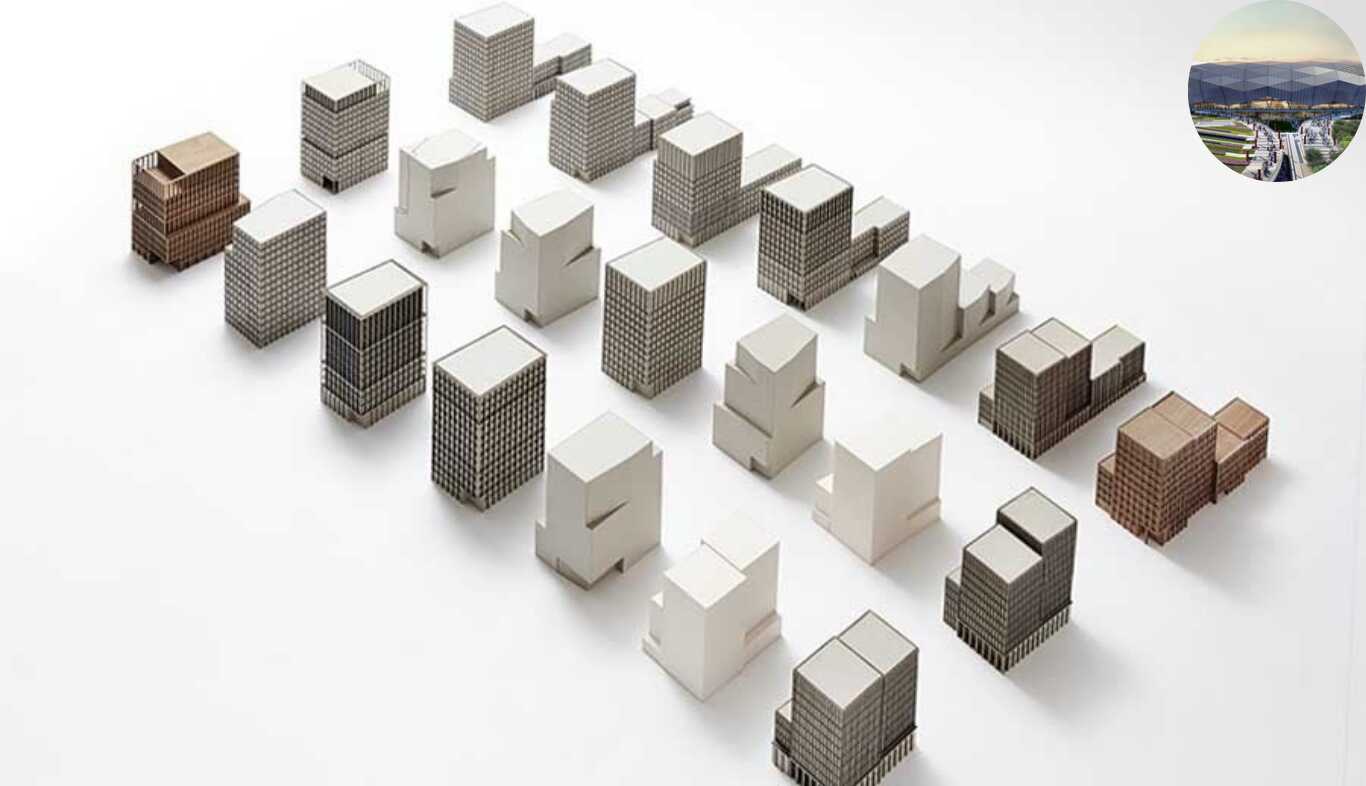But architecture is not limited to building; it’s about constructing venues that inspire and define histories. Architecture is built on creativity, which is the engine of every innovative design. For many students looking to break into this field, the undergraduate architecture portfolio is the canvass that presents itself as proof of their not only creative vision, but their technical skills.
If you are just starting your journey into architecture, or simply have a budding interest in design, this supplement will help you get off to the best start on what will become a vibrant creative career.
Creativity in Architecture: The Compound Effect

Creativity is the essence of architecture. It’s what turns functional spaces into works of art, and everyday buildings into cultural landmarks. So why does creativity matter, and what are some examples of it?
Why Creativity Matters
Creativity in architecture is not just about the beautiful facade, it’s about the problem to solve. They work between practical needs, environmental factors, cultural context, and the need to create spaces that resonate with people. This normalization of build would take away creativity and thoughts behind each structure.
- The problems are novel: Solutions to phenomena like climate change and extreme urban density require innovative responses from architecture. This is evident in global struggles where creative solutions emerge, such as green buildings with integrated sustainable energy systems.
- Encouraging emotional connections: Space that is creatively designed will create emotion by evoking nostalgia, inspiring productivity or providing tranquility. It’s like a live café that’s inviting conversations or a quiet library that gives time for reflection.
Also read (the dias in the house chambers)
Innovative architectural projects Examples
When you mention iconic architecture these designs represent the highest achievements of humanity. Here are a few examples:
- The Guggenheim Museum (Bilbao, Spain) : Another Frank Gehry creation, this complex is known for its diaphanous, naturalistic shapes and eye-catching titanium exterior. It turned a struggling city into an international tourist mecca.
- Fallingwater (USA, Pennsylvania): Frank Lloyd Wright’s creation embodies an unmatched integration with its natural surroundings, making a perfect example of how architecture can fuse with nature.
- The Burj Khalifa (Dubai, UAE): Not only the tallest building in the world, this fantastic feat of engineering and design perfectly marries function and breathtaking beauty.
These examples shine light on the fact that creativity in architecture is not solely about aesthetics, but the quality they bring to life.
How to Make a Successful Undergraduate Architecture Portfolio

Your portfolio is your passport into the world of architecture. It’s not just an assembly of your work—it’s a representation of your creative potential and design process. Here’s how to build a standout portfolio.
What Should A Portfolio Include?
When applying to an undergraduate architecture program, a strong portfolio will display a healthy combination of creative artistic output along with evidence of technical skill. It should consist of the following:
- Sketch: Your hand sketches/ sketches show you how you visualise ideas. They show your ways of thinking and creative instincts.
- Models: This physical or digital models demonstrate your ability to translate 2D ideas into 3D forms. And they are important for the spatial sense part.
- CAD Designs: You must familiarize yourself with computer-aided design software. Incorporate floor plans, elevations, and renderings to exhibit your technical talents.
- Design Process: Showcase the journey of a project from initial idea to final product. These may include mood boards, brainstorming sketches, and early drafts.
Photography or Artwork (if applicable): Include some pieces if you have a background in art or photography. They can help to make your portfolio look more appealing, and showcase your versatility.
How to Make Your Portfolio Stand Out
It requires careful planning to build a portfolio that fetches attention. Here’s how to make yours sparkle:
- Curate Thoughtfully: Quality over quantity. Present projects that highlight your strengths and demonstrate resonance with the values espoused by the architectural program.
- Drop Diversity: A portfolio should include a selection of independent projects, academic work, and collaborations. This is an indication of your range as a designer.
- Emphasis on Presentation: Utilize clean formats and consistent formatting. Allow your work to exhale — no need to squeeze every page filled.
- Tailor for Each Application: Adapt your portfolio to suit the institution you’re applying to. Understand what message they want their design to convey and tailor your writing accordingly.
- Include Explanatory Texts: Describe each project briefly. Tell me how it works, what problems did you run into and how did you solve them.
Showcasing the Creativity in Your Portfolio

Architecture is all about creativity, and your portfolio must showcase that. Here is how to showcase your creativity through your work.
Demonstrating Design Process
- Documenting your design process is one of the best methods to showcase your creativity. They want to see how you think — not just the end result.
- I am sure you are already drawing or sketching,Essentially, Some sketches or brainstorming notes. This provides insight into the origins of your ideas.
- Show Iterations: How many iterations within this stage will you be showing? Outcomes here show problem-solving and adaptability.
- Show Problem-Solving Ability: Did you face a challenge? Demonstrate how you solved it, and innovate.
Combining Artistry and Techniques
Finding a balance is crucial in demonstrating your skills. Here’s how to find the right balance:
Creative Aspect: Take your artistic side and demonstrate it through hand-drawn sketches, abstract designs, or creative renderings.
- Technical Skills: Use CAD drawings, structural analyses, and accurate measurements to showcase your technical prowess.
- Top Tip: Make a project with both the elements. A conceptual design might utilize a strong, inspiring forms, while technical drawings illustrate its viability.
Common problems and how to solve them

It’s not a walk in the park when creating an undergraduate architecture portfolio. Common Obstacles and Strategies For Overcoming Them
Managing Time and Resources
This means students in architecture courses are working under pressure and with limited means. Here’s how to manage:
- Focus on Quality Number of Projects: You are only as influenced as the number of projects that you do. Evangelize a few projects and polish them rather than: Go fast on many pieces.
- Set Milestones: Divide the portfolio creation process into smaller tasks. Give yourself time to draft, brainstorm, edit.
- Be Resourceful: Pulling free or cheap design software to fill in your resource holes.
Staying Motivated and Inspired
Creativity can come and go, especially under stress. Here are some strategies for remaining inspired:
- Freely Seek Out Stimulus: Flip through architecture blogs, check out notable structures, or enjoy design documentaries.
- Collaborate with Peers: Studying with other students can help you gain insights.
- Take Breaks: Remember to take time away from your work. A new mind is most likely to think of new ideas.
Conclusion
Nothing in all of architecture is more important than creativity; so much of the way we design and relate to spaces is touched by it. The undergraduate architecture portfolio is an opportunity for aspiring architects to show off this creativity whilst also demonstrating technical skills. With a considered portfolio, perseverance through challenges, and an authentic viewpoint, you can pave the path for a bright future in the field of architecture.
Also read (gablok house cost)
